Anne of Cleves: copies of the Bruyn portrait
The Bernal/Rosenbach portrait of Anne of Cleves is so masterfully rendered and the deftness and delicacy of the play of light on both sitter and her clothing is simply not replicated in any other painting attributed to Barthyl Bruyn. This is most obvious when the portraits are viewed side by side.
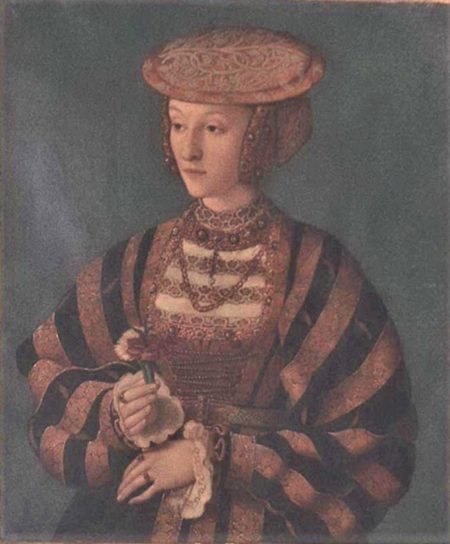
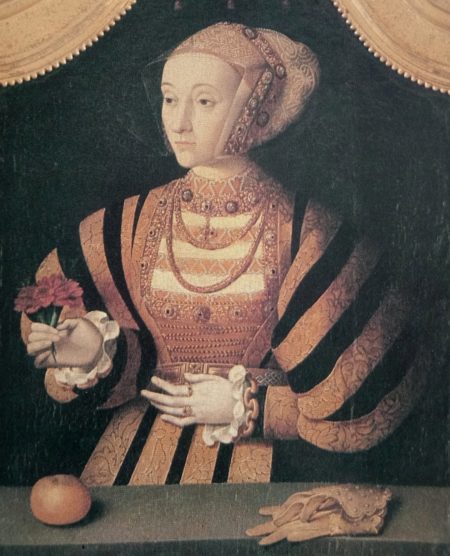

The St John’s/Oxford portrait does not appear to be by Bruyn himself in this light. It has however been restored and examined in the process, and the materials do suggest that it was painted in the 16th Century.
There was evidence of overpainting of a later date that changed details such as the shadows cast by the fruit and gloves- these were removed in the restoration. There was also some contemporary over painting to her face, specifically over her nose. Her nose as it is now matches both the Bernal/Rosenbach portrait and the Holbein portraits.
Clothing details:
While there are some skirts with symmetry in the North Rhine the majority are overlapped. The St John’s/Oxford painting introduces a fourth band, but also shifts the original bands to the left to line up the middle two with the belt closure at the centre of her waist. There are no examples of four bands on any other North Rhine gown.



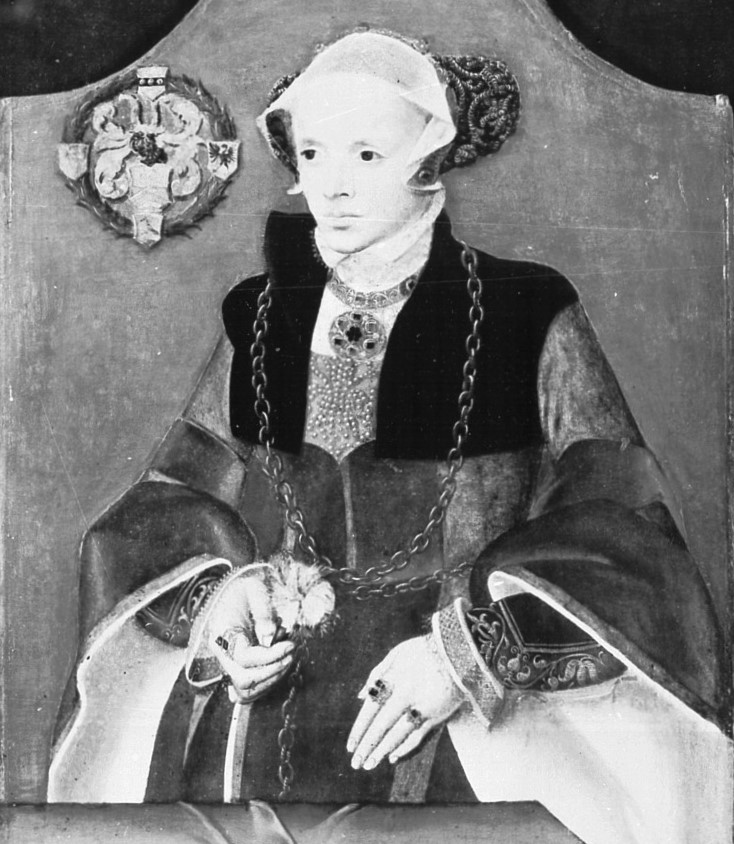
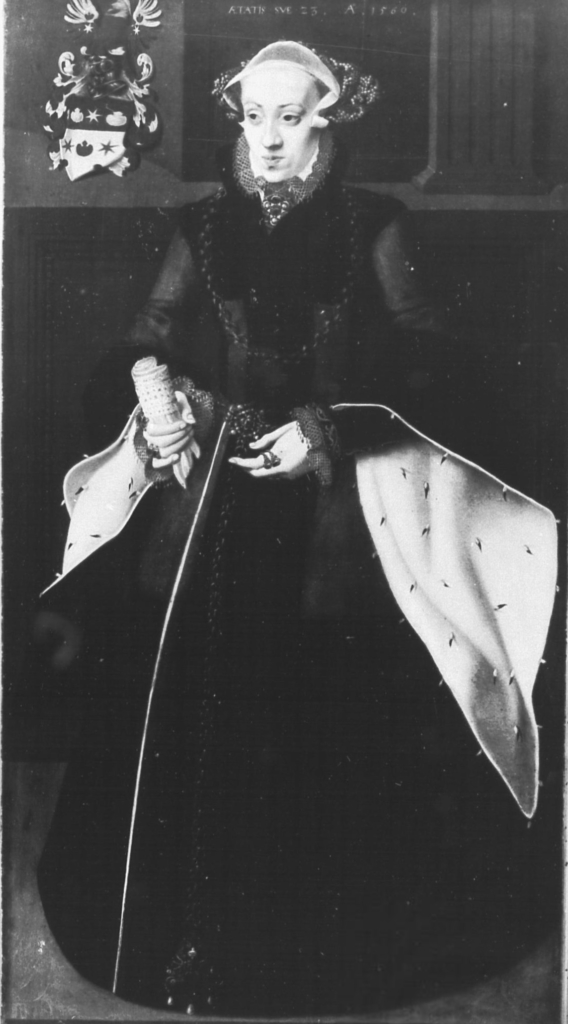

In light of the other issues it seems less like an attempt to flatter than simply correcting an error.
The shape of the back of her headdress is not well depicted, this style should be smooth, rigid, and apparently hollow whereas this portrait makes it appear soft.

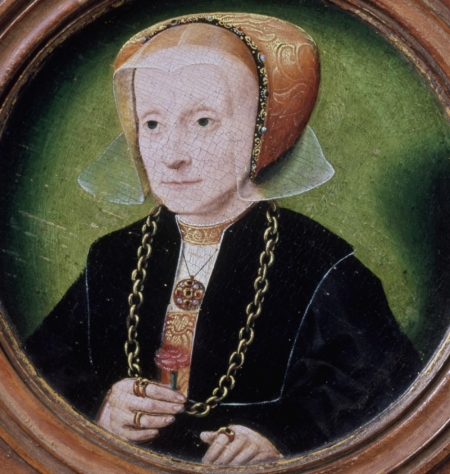
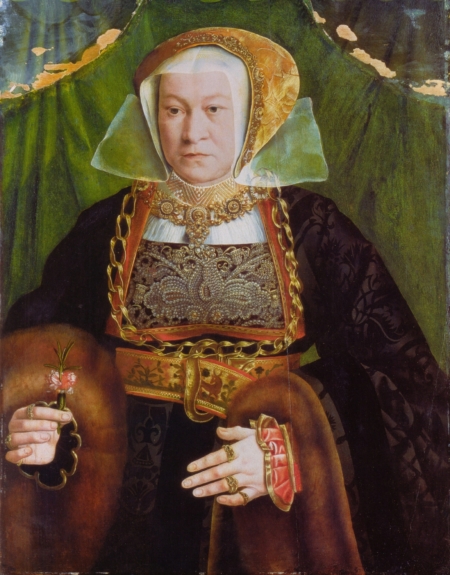



The style depicted should also only have one band of jewels that wraps across the top of the head. Whenever there is an apparent second row of trim, it is usually a supportive edge to maintain the shape of a netted cover, or is woven but flat.

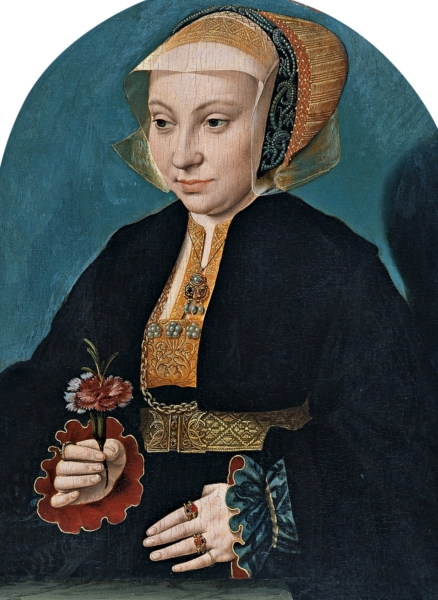

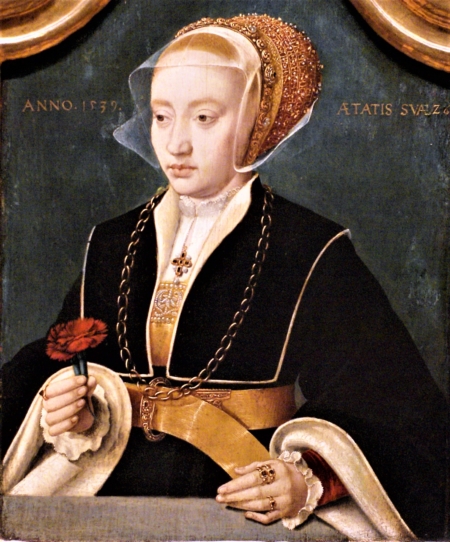
Even the pearlwork does not match any other depictions in the North Rhine. Most pearlwork is found on the body, either on belts (webbe) or covering the chest on a width of fabric (borstlappe), or the strip of decoration at the front of the headdress.
The few examples of pearls on the back of the headdress are generally dotted and spaced apart, but there are five images that show complicated patterns over the entire piece. I have counted the two portraits by Holbein as one.

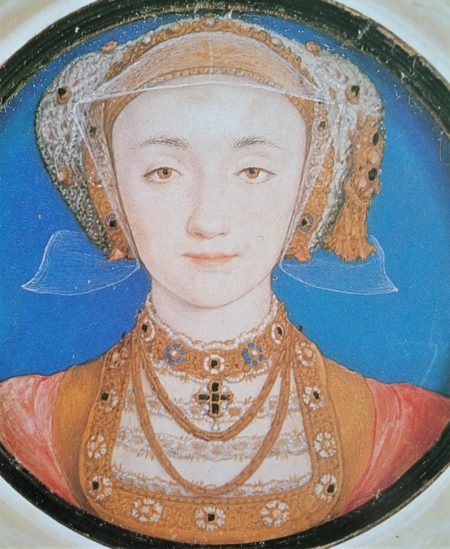
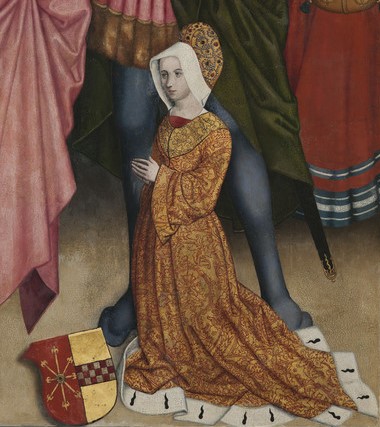


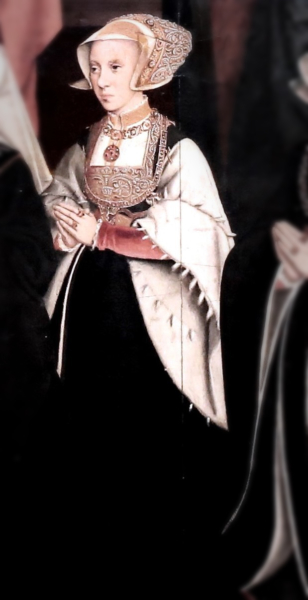
Anne’s headdress in her Holbein portraits take this complexity to yet another level. The pearls are mounted to a pale material, wider pearls through the center of the designs, a row of smaller each side. This material is then cut and placed over the foundation, parts of the pattern overlapping.
Of the remaining copies, only the Witt Library copy retains the three bands of her skirt opening and captures her facial features. Only the Witt and Hever Castle copies appear to be somewhat contemporary, while Rorich seems to have copied the Hever castle portrait.
The later copies tend to mix up the Holbein and Bruyn portraits, as expressed by altering the colour of the gown from black to a warm burgundy.

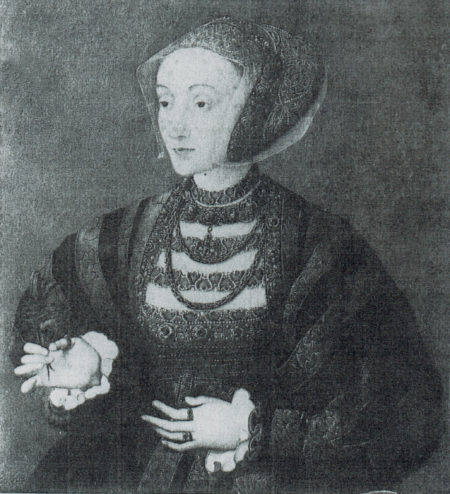
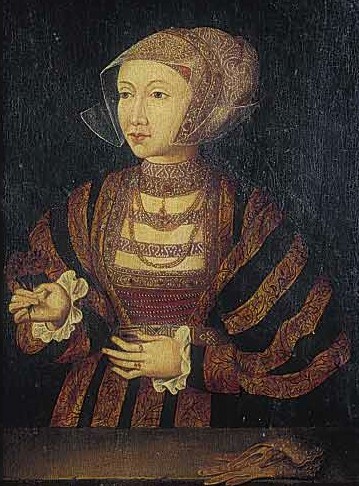


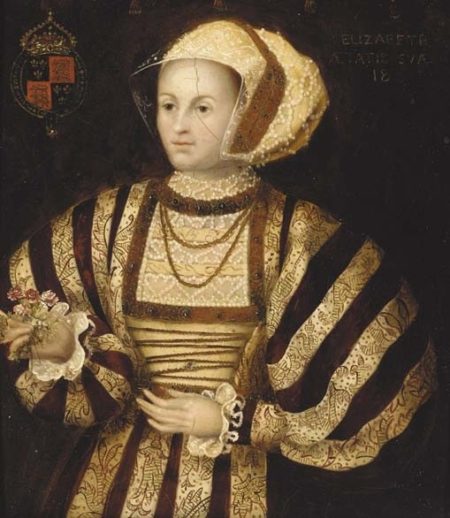
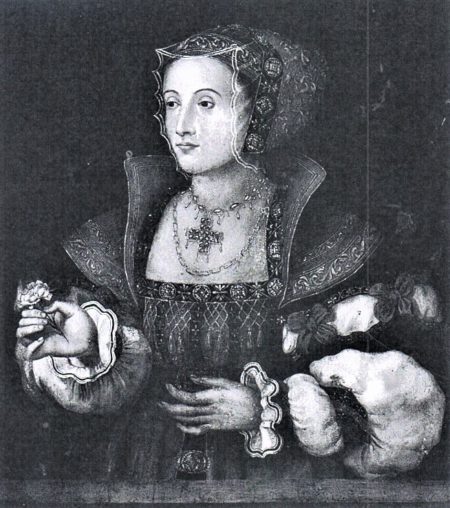
The last copy that has any relationship to the Bruyn portrait is an amalgamation of several examples of Northern Renaissance dress with a dash of allegorical art in the shape of the sheer veil.
It is not unreasonable to consider that copies of her portrait might be desired by either her ladies in waiting, or sympathetic courtiers due to how popular she was in England at the time, and so it is not unreasonable to consider the likelihood that some of these copies originated in England.
This doesn’t discount the possibility of less successful portraits originating from the North Rhine but they are clearly not the work of Barthyl Bruyn himself.
The provenance of all portraits of Anne are somewhat difficult to trace, and often sales were conducted without descriptions. Sometimes the Bruyn portrait and copies are attributed to Holbein, sometimes to Wertinger. Even Hans Eworth.
This is not a surprise given how poorly understood Anne’s clothing was to all of the English ambassadors and subsequently by English historians. This has lead to multiple portraits inscribed “Anna Regina” to be either Anne Boleyn or Anne of Cleves. Sometimes even both.
Bibliography:
Saaler, Mary. Anne of Cleves: Fourth Wife of Henry VIII, Rubicon Press, 1995, ISBN 0948695412, 9780948695414
Westhoff-Krummacher, Hildegard. Barthel Bruyn der Aeltere als Bildnismaler, Volume 35 of Kunstwissenschaftliche Studien, Dt. Kunstverl., 1965
– Land im Mittelpunkt der Mächte. Die Herzogtümer Jülich, Kleve, Berg. (Städtisches Museum Haus Koekkoek Kleve 1984, Stadtmuseum Düsseldorf 1985).Published by Boss-Verlag, Kleve (1985) ISBN 10: 3922384463 ISBN 13: 9783922384465
A Portrait of Anne of Cleves (pp. 172-175) The Burlington Magazine, Vol. 134, No. 1068, Mar., 1992, Published by: Burlington Magazine Publications Ltd. Sourced as an ILL, also available at: https://www.jstor.org/stable/885027
St John’s copy:
Manner of Barthyl Bruyn. Anne of Cleves, St John’s College, University of Oxford, https://artuk.org/discover/artworks/anne-of-cleves-223303
Hever Castle copy:
– Anne of Cleves. Hever Castle.https://www.hevercastle.co.uk/news/6th-january-1540-henry-viii-married-anne-cleves/ and https://www.facebook.com/hevercastle/posts/on-this-day-in-1540-henry-viii-and-anne-of-cleves-were-married-at-the-royal-pala/2546568322036967/
Hans Eworth attributions:
Manner of Hans Eworth, Portrait of a lady, small three-quarter-length, in a red and cream dress, 9 Nov 2000,
https://www.christies.com/en/lot/lot-1918973
Manner/style of Hans Eworth (Flemish, 1515–1574), Portrait of Lady Guildford, aged 28, wearing a choker, holding a letter , 1527, http://www.artnet.com/artists/hans-eworth/portrait-of-lady-guildford-aged-28-wearing-aa-hFZwRw4D1JEzd6cku0MhuA2